Top DownEast Acadia Lighthouses to Explore by Land & Sea
Discover these uniquely Maine landmarks by land and by sea.

DownEast Acadia’s collection of twenty-seven lighthouses attract visitors from all around the world while still keeping vigil over our rocky coastline and is home to approximately one-third of all the lighthouses in Maine. Use the information provided here to plan your tour to see them all.

The unique red-and-white stripes of West Quoddy Head Light’s tower stand brightly against the sky as the easternmost U.S. lighthouse meets the dawn’s first rays. The lighthouse has a seasonal visitor’s center and offers seasonal tours of the tower on Saturdays.
Bring your passport to Campobello Island, where you’ll find Mulholland Light and Head Harbour Light (also known as East Quoddy Head Light). Make a day of it with a whale watch cruise and visit the historic Roosevelt Campobello International Park.
In Calais stands Whitlocks Mill Light, our nation’s northernmost lighthouse, standing in a broad S-curve in the St. Croix River. The lighthouse is best viewed by land from Pikewoods Rest Area.
In Cutler, the delightfully restored Little River Light now welcomes overnight guests looking to get away from it all. You can also book a stay at Isle au Haut Light and Burnt Coat Harbor Light or in the former West Quoddy Life Saving Station.
Join a Baker Island Light scenic excursion from Bar Harbor and explore this fascinating 130-acre island. On your way back, enjoy a lingering view of Egg Rock Light at the mouth of Frenchman Bay.
Get the kids involved along the Deer Isle Lighthouse Tour. Before you arrive, order a U.S. Lighthouse Society Passport and collect a stamp at one or all of the included lighthouses.
True Maine Lighthouse Gallery
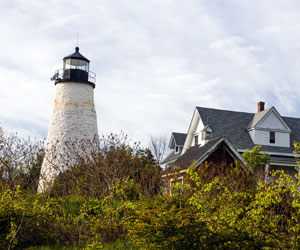
Dyce Head Light
Castine

Pumpkin Island Light
Deer Isle

Eagle Island Light
Eagle Island

Deer Island Thorofare Light
Stonington
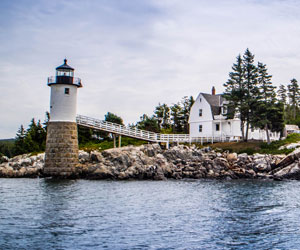
Isle au Haut Light
Isle au Haut

Burnt Coat Harbor Light
Swan's Island

Blue Hill Bay Light
Blue Hill
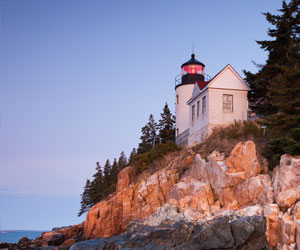
Bass Harbor Head Light
Tremont
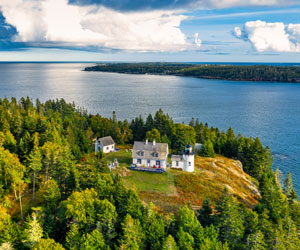
Bear Island Light
Cranberry Isles

Great Duck Island Light
Frenchboro

Mount Desert Light
Mount Desert Rock
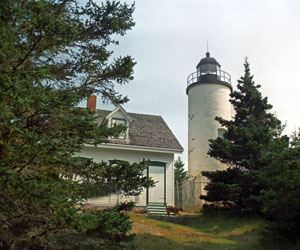
Baker Island Light
Cranberry Isles
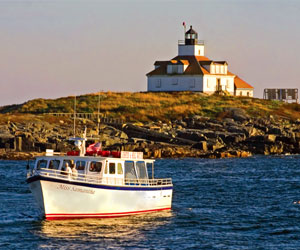
Egg Rock Light
Frenchman Bay

Winter Harbor Light
Winter Harbor
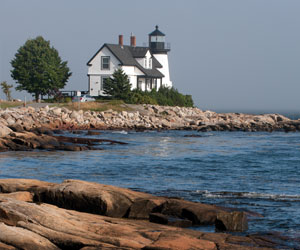
Prospect Harbor Point Light
Gouldsboro
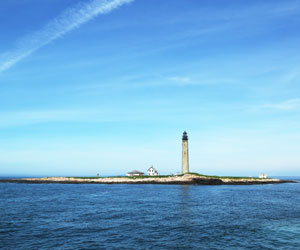
Petit Manan Light
Milbridge

Nash Island Light
Pleasant Bay
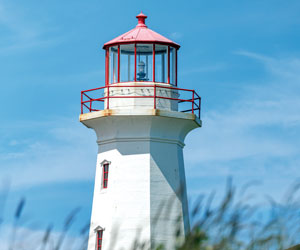
Machias Seal Island
Bay of Fundy

Little River Light
Cutler

West Quoddy Head Light
Lubec
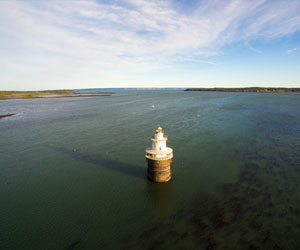
Lubec Channel Light
Lubec

Mullholland Point Light
Campobello Island, NB, CA

Head Harbour Light
Campobello Island, NB, CA

Whitlocks Mill Light
St. Croix River
Lighthouses not shown: Narraguagus Light, Narraguagus Bay; Moose Peak Light, Mistake Island; Libby Island Light, Machiasport.
Planning Tools
To help you plan your trip we provide information on drive time and distances to and around the region. Plus info on other commercial transportation options.
Once you arrive in DownEast Acadia, you will want to access local sources of visitor information, state laws, recreation rules, and road conditions.
To help you pack or plan your day, check out the current weather in the region or learn about year-round averages of temperature and precipitation.
